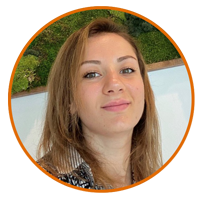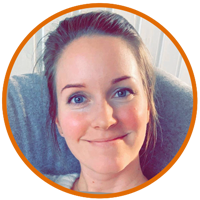By: the LINK Medical and Viedoc team.

eTMF stands for electronic trial master file, the all-important trial master file in a digital format. Over the past decade, it has become standard in the pharmaceutical and biotechnology industries to use an electronic TMF as a way of digitally capturing, managing, storing and sharing those essential documents and content from a clinical trial.
LINK Medical and Viedoc Technologies AB recently announced a renewed partnership program and the current partnership program represents an effective collaboration between system developers and users in a unique and well-organized process that can result in truly innovative solutions.
Anyone involved in any part of clinical trials would agree that it’s a major understatement to say they are truly a complex process, and the administrative burdens are huge. The many challenges of data collection, monitoring, and data management are compounded by the number of people that need to have access to information and data in various roles and at various times. The complexity of this work provides an ideal application for software that helps keep control of all documentation, signatures, submission, and approvals while allowing easy access to all its users.
Today’s focus on efficiency and cost savings are also contributing to a greater complexity. No one knows this better than LINK Medical, a full-service contract research organization (CRO) providing product development services for the pharmaceutical and medical device industries across Northern Europe.
Clinical trials have a necessary focus on data and processes. But they are also all about people. No amount of technology is going to eliminate the need for people to contribute, participate and interact. From trial managers to subjects and patients, clinicians, and data managers. People in many different roles and situations need to access documentation and data in a system that is as easy for routine users as it is for those with more seldom access.
Viedoc offers all the conventional features and benefits of a modern eClinical suite – but that’s not what makes Viedoc truly stand out. Viedoc provides tools that make the process more enjoyable, with its engaging design and user interface, simplicity, and guided workflows that shape Viedoc’s unique user experience.
It started with opening a gate
Viedoc was originally developed in close collaboration between users and experts in digital technology starting two decades ago. This process has continued in the eTMF development where Viedoc brought the users back, closer to the development team.
“We decided to open a gate and that’s how the whole collaboration started between Viedoc development and the user, LINK Medical”. Lina Gaggi, Product Owner at Viedoc

“The users have been able to directly communicate with the system developers and see how the system is developed. The developers have always been interested in how the users work, so it’s a good learning experience all round” says Lina.
Cathrine Jacobsen – CRA at LINK Medical has been collaborating closely with Viedoc in the creation of the eTMF solution.

She says: “It’s very important for the user that the eTMF doesn’t feel like a black hole where you upload your documents, save them and never see them again. When a system works really well, like Viedoc does, it’s intuitive and user-friendly. You don’t need extensive training just to know where to click.”
Users at LINK Medical have been part of the process of developing the eTMF from the beginning. They’ve been able to provide input on which features to prioritise, and how they would like them to work. For example, the developers were provided at the start with a long list of all the types of documents that are created in the CRF process. This is unique in the development of any TMF.
The collaboration is all about the generation of ideas with a high degree of novelty
When a user describes a need, the developers can also read between the lines and think of other features that might be beneficial. In this way, features can be combined and developed in truly innovative ways.
When a new suggestion emerges from this process the users can influence from the very start how it is built, what it looks like, and how it can be used.
The developers can continuously expand their knowledge base through input from the users.
As a way of developing the system, nobody sees any downsides. Development of any new system involves of course learning new features as they arise and adapt processes and procedures to include them.
Cathrine: “Even though a system in development generates a need for regular procedural changes, this is a part of my job that I really enjoy.”
Our team has a weekly short meeting in which people can learn about new features and get help – an easy way to collect feedback and questions from as many users as possible.
Where can it go from here?
Lina Gaggi: “You could say that the work is done when all the features we have on the roadmap are in place, but when you have such a combination of great minds, who knows where the limit is to what we can come up with together.”
“We’re not just building another eTMF. What we are trying to do is to simplify management, administration, and archiving of trials and this will always be needed.”
Contact LINK Medical to learn how we can help you with your product development using the most efficient tools and the best teams in the industry. We are a full-service CRO with services for the pharmaceutical and medical device industry. Reaching from early phase development to post-marketing, we provide expert guidance through every stage of product development – all from ONE source.